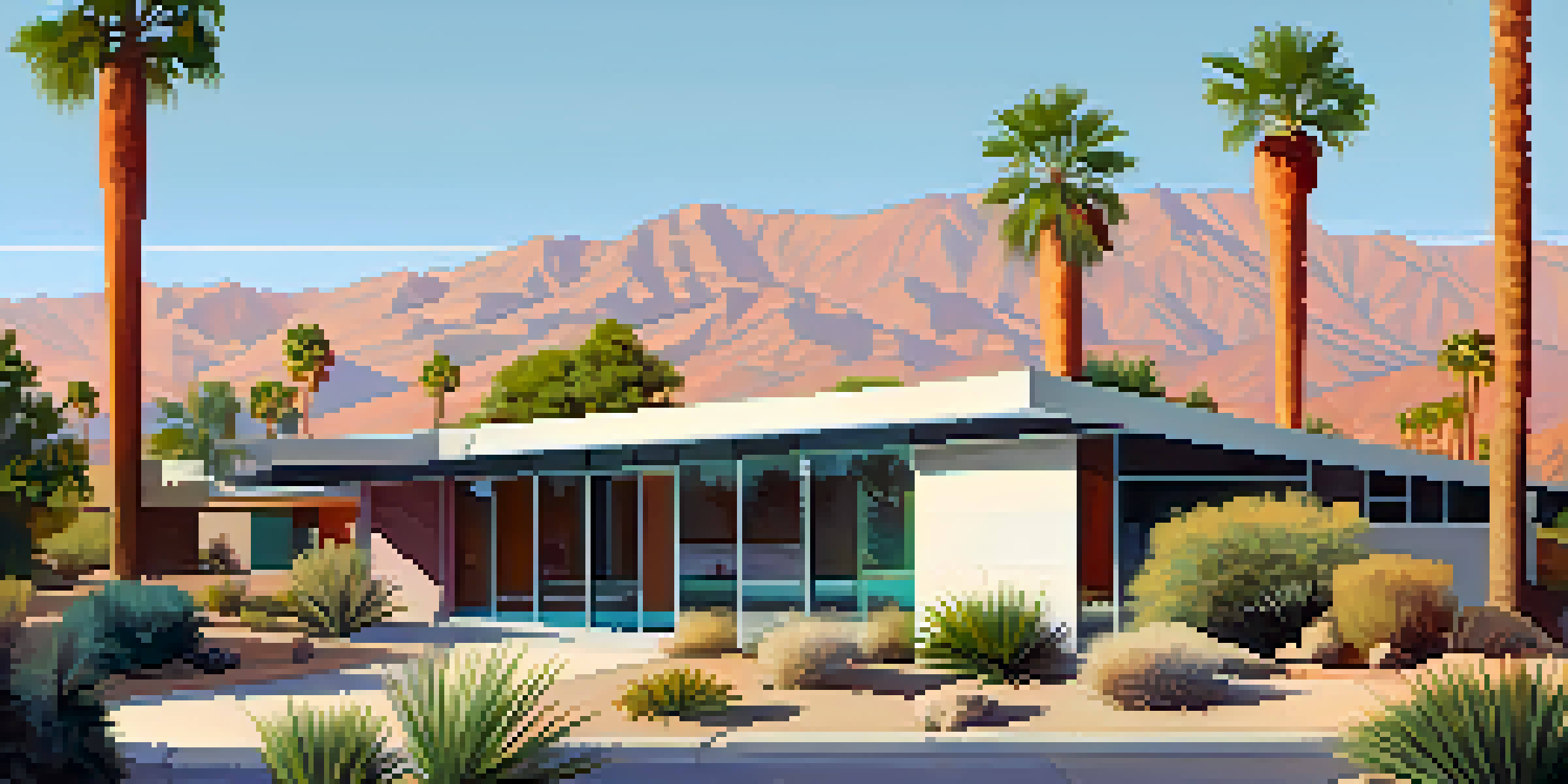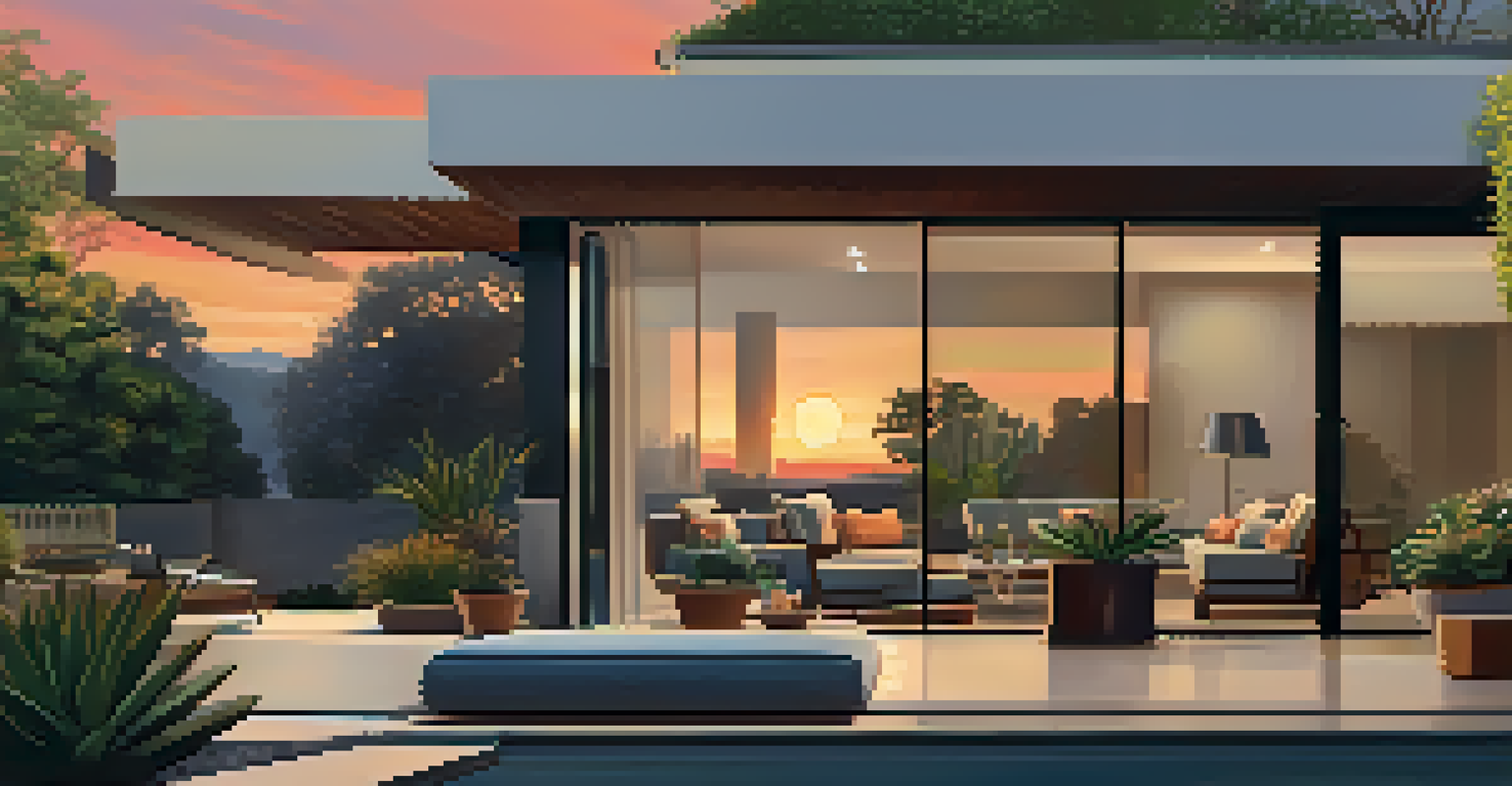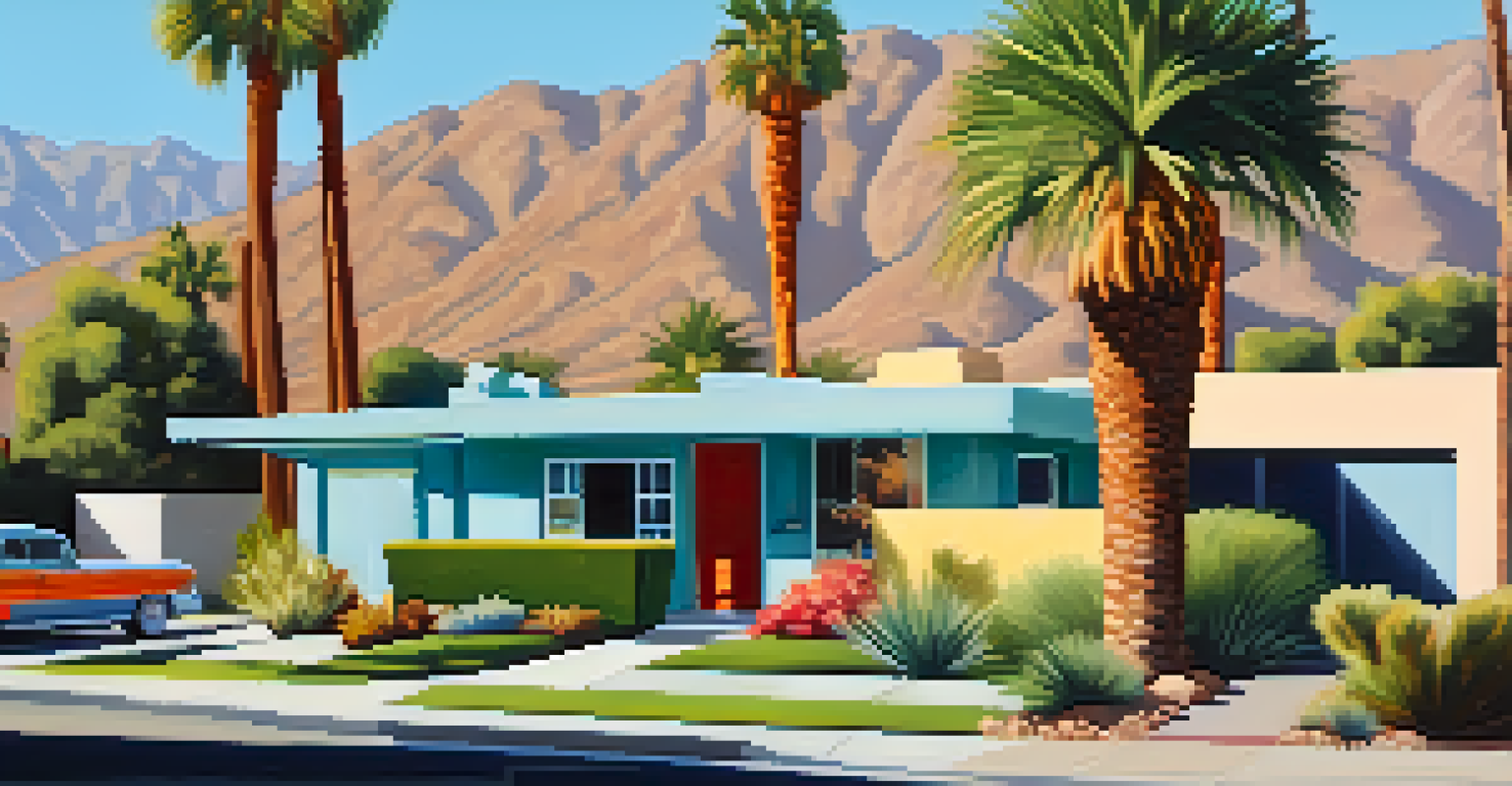Iconic Mid-Century Architecture in Palm Springs Historic Districts

The Allure of Palm Springs' Historic Districts
Palm Springs is renowned for its stunning mid-century architecture, which reflects a unique blend of style, innovation, and the desert landscape. The historic districts here showcase homes that were designed to embrace indoor-outdoor living, allowing residents to enjoy the sun and fresh air. These neighborhoods, like the Movie Colony and Vista Las Palmas, are filled with notable examples that have become iconic in their own right.
Good design is all about making other designers feel like idiots because that idea wasn't theirs.
When you stroll through these districts, you'll notice how the architecture harmonizes with the natural surroundings. The use of large glass windows and open floor plans invites the beauty of the desert inside, creating spaces that are both functional and aesthetically pleasing. It’s this connection to nature that sets Palm Springs apart from other architectural hotspots.
Moreover, the mid-century design movement has made a significant impact on American architecture. It introduced clean lines, organic shapes, and bold colors that still influence modern design today. This rich history is preserved in Palm Springs, making it a must-visit destination for architecture lovers.
Key Characteristics of Mid-Century Modern Design
Mid-century modern architecture is characterized by its minimalist aesthetics and a strong emphasis on bringing the outdoors in. This style often features flat planes, large glass windows, and open spaces that encourage a seamless transition between the interior and exterior. These elements not only create visually stunning homes but also promote a lifestyle that prioritizes relaxation and connection to nature.

Another defining trait of this architectural style is the use of innovative materials. Palm Springs homes often showcase wood, steel, and concrete, combined in ways that enhance both form and function. This creative use of materials allows for unique designs that stand out yet feel cohesive with the surrounding environment.
Palm Springs' Architectural Heritage
The historic districts of Palm Springs showcase stunning mid-century homes that exemplify the connection between architecture and the natural desert landscape.
Additionally, mid-century modern homes often include striking geometric shapes and vibrant colors, reflecting the optimism of the era. This playful approach to design is evident in many of the properties found in Palm Springs, capturing the spirit of the 1950s and 1960s while remaining timeless.
Famous Architects Who Shaped Palm Springs
Several architects played pivotal roles in defining Palm Springs' mid-century aesthetic, with names like Richard Neutra and Albert Frey standing out. Neutra's designs often boasted sleek lines and a focus on the surrounding landscape, leading to breathtaking homes that feel integrated with their environment. His work can be seen in the famous Kaufmann Desert House, a prime example of mid-century modernism.
The best way to predict the future is to design it.
Albert Frey, another key figure, is known for his innovative use of materials and space, making a significant mark on the architectural landscape of Palm Springs. His designs often incorporate local stone and desert flora, creating homes that blend harmoniously with their surroundings. The Frey House II is a testament to his genius, showcasing stunning views and a thoughtful layout that maximizes natural light.
These architects not only transformed Palm Springs but also influenced the broader mid-century movement. Their legacies live on through the homes they designed, which continue to inspire new generations of architects and design enthusiasts.
Notable Mid-Century Homes to Visit
One of the most iconic mid-century homes in Palm Springs is the Kaufmann Desert House, designed by Richard Neutra. This architectural masterpiece stands out with its flat roof, expansive glass walls, and stunning mountain views, making it a must-see for visitors. Guided tours are available, allowing architecture lovers to explore the interior and learn about its fascinating history.
Another gem is the Frey House II, which reflects Albert Frey’s unique approach to design. Nestled into the hillside, this home boasts breathtaking views and a layout that embraces the surrounding landscape. The home is also notable for its use of materials that harmonize with the natural elements, offering a real sense of place.
Key Figures in Mid-Century Design
Architects like Richard Neutra and Albert Frey significantly shaped Palm Springs' mid-century aesthetic, leaving a legacy that continues to inspire modern design.
Lastly, the Elvis Honeymoon Hideaway is a charming piece of history where Elvis Presley and Priscilla spent their honeymoon. This home features a distinctive butterfly roof and an intimate courtyard, embodying the essence of mid-century modern design. It's a delightful stop for fans of the King and those interested in the cultural history of Palm Springs.
The Importance of Preservation Efforts
As the popularity of mid-century architecture continues to grow, so does the need for preservation efforts in Palm Springs. Many of these historic homes face the threat of demolition or neglect, making it crucial for the community to advocate for their protection. Local organizations, like the Palm Springs Historical Society, work tirelessly to raise awareness and promote restoration initiatives.
Preserving these architectural treasures not only maintains the city’s unique character but also honors the legacy of the designers who shaped its landscape. By protecting mid-century homes, we ensure future generations can experience the beauty and innovation of this iconic style. Community support plays a vital role in these efforts, encouraging residents and visitors alike to appreciate the cultural significance of these structures.
Moreover, preservation enhances the local economy, attracting tourists and architecture enthusiasts to Palm Springs. Events like Modernism Week celebrate this rich architectural heritage, showcasing the beauty of mid-century design while encouraging responsible tourism that respects and supports the community.
Exploring the Neighborhoods: A Walking Tour
One of the best ways to appreciate Palm Springs' mid-century architecture is by taking a walking tour through its historic districts. Neighborhoods like the Twin Palms and the Desert Park Estates offer a delightful mix of architectural styles, showcasing the creativity of various designers. Walking allows you to truly soak in the details of each home, from the vibrant colors to the unique shapes and materials.
As you stroll through these charming streets, keep an eye out for the distinctive features that define mid-century modern architecture. Look for carports, clerestory windows, and outdoor living spaces that invite you to imagine the lifestyle of the era. Each home tells a story, reflecting the aspirations and values of the time while remaining relevant today.
Preservation Efforts Are Crucial
Preserving Palm Springs' mid-century architecture is essential to maintaining its unique character and honoring the innovative designers who contributed to its cultural heritage.
Consider joining a guided tour led by knowledgeable locals who can provide insights and anecdotes about the homes and their history. This immersive experience not only enhances your understanding of mid-century design but also fosters a deeper appreciation for Palm Springs' architectural heritage.
The Future of Mid-Century Architecture in Palm Springs
The future of mid-century architecture in Palm Springs looks promising, with a growing interest in preservation and appreciation for these iconic homes. As more people recognize the value of mid-century design, efforts to restore and maintain these properties are gaining momentum. This renewed focus ensures that the architectural legacy of Palm Springs will continue to thrive.
Innovative projects that incorporate mid-century elements into new builds are also emerging, demonstrating how this style can adapt to modern needs while respecting its roots. Architects are finding ways to blend contemporary features with classic designs, creating homes that honor the past while embracing the future.

Ultimately, the ongoing conversation about mid-century architecture in Palm Springs is vital for maintaining the city’s identity. By celebrating its rich history and promoting thoughtful preservation, residents and visitors alike can contribute to the legacy of this unique architectural movement.